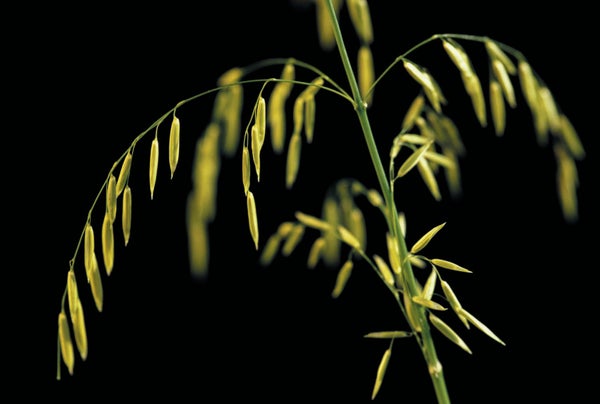In the 1950s and 1960s farmers, municipalities and even homeowners were widely spraying the insecticide DDT to kill pests. The chemical also polluted the food web and destroyed the eggs of Bald Eagles. By the early 1970s America's national symbol was almost extinct. Concern for the birds helped to prompt Congress to pass the Endangered Species Act (ESA), which was enacted on December 28, 1973. More than 1,600 animals and plants have been listed as threatened or endangered, and more than 60 species have recovered enough to be taken off the list—including the Bald Eagle.
The ESA is now 50 years old. It is a vital part of our nation's conservation efforts, but it comes into play only when a species is nearly gone. The act is an emergency room for revitalizing species already in dire condition. Just as preventive medicine keeps people out of the ER, there is much we can do to prevent our vulnerable creatures from needing the act in the first place. Recent studies have shown convincingly that the best way to protect species is to protect their ecosystems and habitats. Yet climate change is stressing ecosystems mightily, and urban, suburban and rural sprawl are eliminating natural habitat fast.
To preserve habitats is to preserve species. To that end, we must greatly expand our conservation efforts. Reviving a species is difficult and costly and can disrupt human communities. And according to the National Wildlife Federation, roughly one third of all vertebrates and vascular plants are in danger of vanishing. If we preserve habitats, we won't need to triage so many plants and animals.
On supporting science journalism
If you're enjoying this article, consider supporting our award-winning journalism by subscribing. By purchasing a subscription you are helping to ensure the future of impactful stories about the discoveries and ideas shaping our world today.
Ideally, the federal government should create a national ecosystem-conservation plan that sets aside land and water from development. Although the country's polarized politics make that a long shot, other legislative initiatives that have bipartisan support but are languishing could go a long way toward that goal. We urge Congress to pursue legislation like the Recovering America's Wildlife Act (RAWA). The House of Representatives passed the bill in 2022, but it failed to pass in the Senate before the 117th Congress ended in January 2023.
The bill would provide significant funding for conservation or restoration of wildlife habitat that supports species at risk. RAWA essentially modernizes the Pittman-Robertson Act, one of the country's first species-protection acts. Supported by hunters dismayed at the loss of deer, ducks and turkeys, the 1937 act created an excise tax on guns and ammunition, and the funds went to states to create wildlife refuges where these animals could thrive. Deer, ducks and turkeys are now commonplace across America, proof that the effort worked. Yet RAWA has been stagnating in Congress since the bill was reintroduced in March.
This year the Supreme Court did a disservice to conservation efforts with its ruling in Sackett v. EPA, which limits the types of watery environments that can be considered wetlands. The decision weakens the 1989 North American Wetlands Conservation Act, which authorizes grants to be given to public-private partnerships to protect and enhance wetland ecosystems that waterfowl, other migratory birds and fish depend on. Almost 3,000 projects have conserved an estimated 2.98 million acres of habitat. We hope the courts avoid such antiscientific meddling in the future, and we ask Congress to find ways to strengthen the act's original provisions.
The North American Wetlands Conservation Act's many successes inspired a new effort in the summer of 2022, when a bipartisan group of senators introduced the North American Grasslands Conservation Act. It would provide incentives for private landowners across the country to conserve and restore grasslands, which are important for wildlife in general, as well as for teetering species such as the Sage Grouse and Prairie Grouse. The idea behind the wetlands and grasslands acts is to conserve ecosystems so species can thrive, and both measures enhance resources such as freshwater that in some parts of the country are waning. Congress never got to the bill; we hope it is reintroduced soon.
An even broader initiative is “30 × 30,” a global plan to protect at least 30 percent of lands and waters by 2030. More than 100 countries, including the U.S., have joined a global coalition championing this goal. Under President Joe Biden's version of the plan, called Conserving and Restoring America the Beautiful, several tracts have been designated as protected—notably, the Bears Ears National Monument in Utah. Bears Ears was created in consultation with tribes in that region, granting them access for traditional plant gathering. The country could use many more such protected areas.
These conservation initiatives, and more like them to come, protect ecosystems, habitat and therefore species because they follow a sound, nature-based logic. Bruce Stein, chief scientist at the National Wildlife Federation, recently told Scientific American that conservation is most effective when built on three pillars: representation, meaning some of every ecosystem; resilience, or enough of each ecosystem for it to last; and connectivity—multiple, connected locations of each ecosystem so that as climate change and human development pressure species, they have enough space and time to move or adapt. Congress and the Biden administration must keep these principles in mind when finalizing RAWA and acting further on 30 × 30.
People and progress depend on nature for enormous benefits. Preserving ecosystems doesn't just protect wildlife; it protects humanity. As Earth's dominant species, we are stewards of our world. If the aspiration to care for our world because we can is not enough, it's wise to remember that if you destroy your home, you destroy your life.
